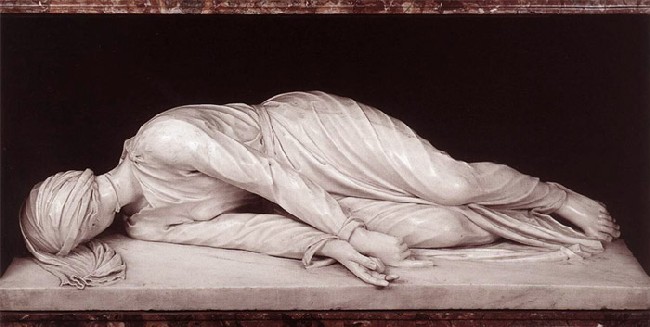
The month of November is devoted to remembrance of the dead. Or in a larger view, to remembering those saints and people who have completed life on earth. This makes sense because November also completes the liturgical year.
This year, it is on November 30 that we start anew with Advent leading to the birth of Jesus.
I use the book Benedictine Daily Prayer (BDP) to pray the divine office and on November 26 the book has its last saint of the liturgical year to be honored. He is St. Silvester Gozzolini (“Born at Osimo, Italy, 1177; died at Monte Fano, 1267").
St. Silvester Gozzolini founded “the Silvestrine Benedictines, known as the Blue Benedictines from the color of their habit.” They followed a stricter interpretation of the Rule of St. Benedict. The small Silvestrine congregation still exists today after over 750 years and they have monasteries located on several continents, including at least two Silvestrine monasteries in the USA.
I was particularly drawn to the story of St. Silvester Gozzolini because, like St. Gregory, he was another active contemplative.
Early in St. Silvester’s adult life he became a “canon of the Cathedral (canons were the priests who assisted the bishop in running his diocese; their parish was the Cathedral church).” But he also longed to fulfill another dream — that of a contemplative.
Although it was St. Silvester’s desire to enter the solitary contemplative life, he continued in his duties at the diocese until his objection to the immoral life of the bishop caused the bishop to threaten Silvester’s removal. At about the same time, St. Silvester saw “firsthand the decaying corpse of a local nobleman who had been renowned for his physical beauty.”
St. Silvester left the diocese and went to live near the ocean in seclusion. However, disciples began to seek his guidance. That led to the formation of a group which later became a monastery and the Silvestrine congregation of Benedictine monks. Over his long life (he entered the heavenly realms at age 90) he founded 11 monasteries.
St. Silvester Gozzolini is another example of how the contemplative and active life are not in conflict.
BDP has this fitting final prayer to honor St. Silvester Gozzolini as the last saint in November, as we honor all who have gone on, and as we near the end of the liturgical year:
“Lord our God, you inspired blessed Silvester, your abbot, with the desire for monastic solitude and zeal for the active ministry. May we seek you always with true sincerity of heart and through our service in humility hasten toward our eternal home. This we ask of you.”
______________________________
Sources:
St. Silvester at St. Patrick Catholic Church
The picture is of a flying raven from IHeartVector Thank you!
.
Thursday, November 27, 2008
End of the Year. A Benedictine oblate blog
Subscribe to:
Post Comments (Atom)









John, I found myself breathing more slowly and physically relaxing as I read the first couple of your posts and began to learn in more detail about your lifestyle.
ReplyDeleteHow wonderful that you have chosen/discovered how to combine living in and of the world in such a beautiful way.
I look forward to learning more about your life.
Mary,
ReplyDeleteThank you for the kind comment.
I was an atheist until I was 37 years old, then, after being born again, I spent 20 years in the Reformed tradition of evangelical Christianity, and most recently became a Benedictine oblate at a Catholic monastery.
It is the fullness of the oblate monastic practices that distinguishes my life now from what is was before.
Same elements as before, but rearranged in a monastic manner.
It is not so much that oblates gain any special knowledge or engage in spiritual practices reserved only for the initiated — there is none of that. You become an oblate by oblation — the offering or gift of yourself to God in a life guided by the ancient Rule of St. Benedict.
There is no set course of study to master and no spiritual practices reserved for a special group, everyone has prayed and read the Psalms and read spiritual books, and enjoyed silence.
Because monastic lifestyles and traditions have 1,800 years of continuous history, and because major elements monastic practices — daily praying the Psalms — has a history of 3,000 years, you may find a monastic tradition that has developed in the past that will fit your spirit today.
My life is much more peaceful than before — who would have guessed that silent monks have anything to say to us today.
Here is a blog on Praying without Ceasing and how it is the central element of the monastic life.